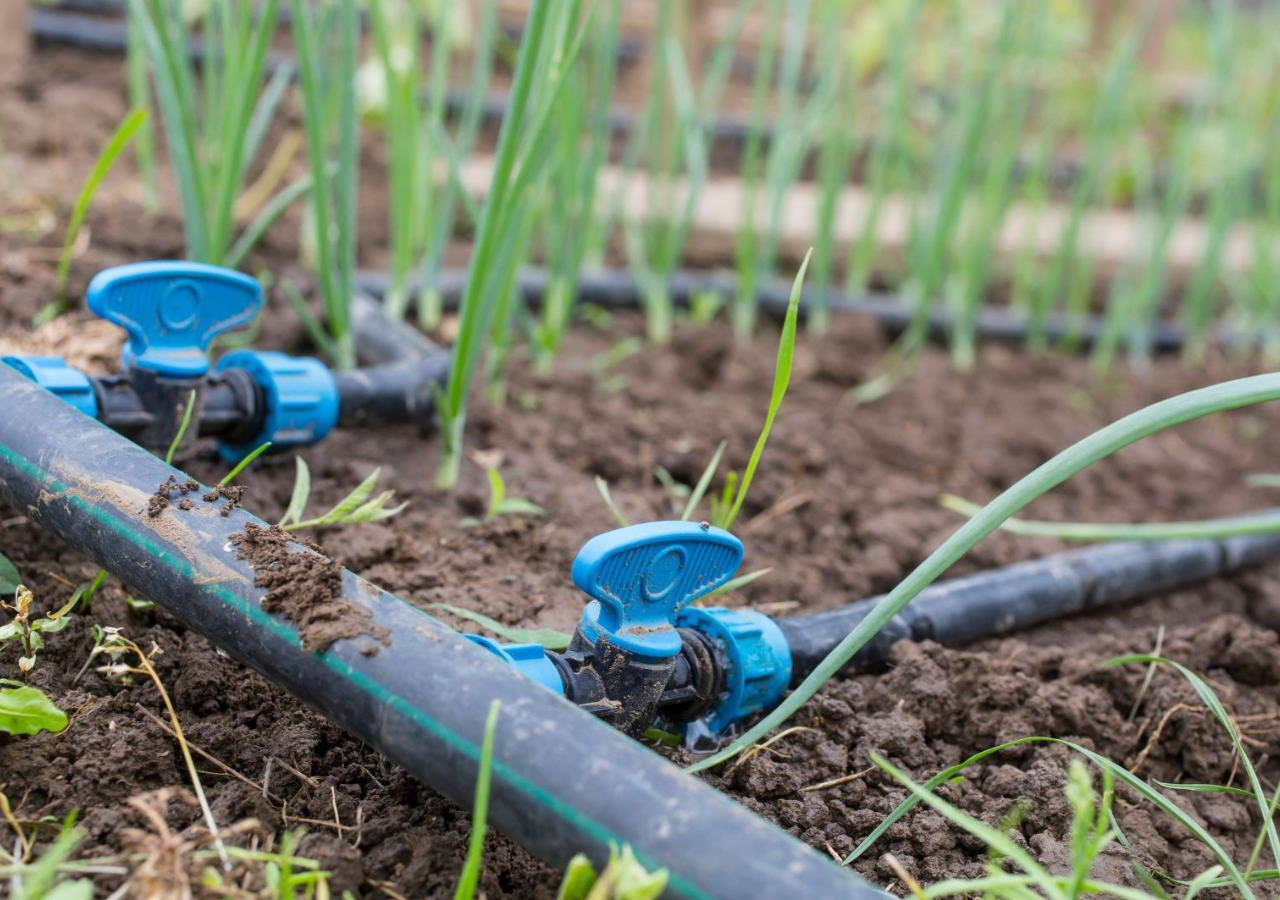Looking for a smarter way to water your Melbourne property? We are Melbourne’s leading supplier of drip irrigation systems, offering a comprehensive range of solutions tailored to your specific garden or green space.
Our team of irrigation specialists is passionate about helping you achieve a flourishing landscape while using water efficiently. Drip irrigation ditches wasteful traditional methods, delivering water directly to plant roots. It minimises evaporation and ensures every drop makes a difference.
We offer a variety of drip irrigation systems to suit any property size or budget. From sprawling gardens to cosy courtyards, we have the perfect system to keep your landscape thriving. Our user-friendly garden irrigation systems are simple to install and maintain, allowing you to manage your watering schedule and create a healthier, more vibrant outdoor space.
Alongside top-quality products, we provide expert advice and support. Our irrigation specialists will design a bespoke system that complements your landscape and maximises water efficiency.
We are committed to exceptional customer service, so you’ll have all the knowledge and support you need to get the most out of your drip irrigation system.
Embrace the future of sustainable irrigation with us!
Contact us today to discuss your drip irrigation needs and unlock a world of water savings and a beautiful, flourishing landscape

What is a Drip Irrigation System?
Tired of wasting water on your lawn and gardens? Drip irrigation offers a precise and efficient solution, delivering water directly to the roots of your plants. Here’s what makes it so beneficial:
Watering
Unlike sprinklers used for spray irrigation, drip irrigation systems use emitters or tiny drippers placed near plant bases. This ensures water reaches the root zone, where it’s most needed.
Water Conservation
Drip irrigation minimizes evaporation and water runoff, saving you money on your water bill and helping the environment.
Improved Plant Health
Drip irrigation promotes healthy growth and reduces the risk of fungal diseases that thrive in constantly moist soil by delivering water directly to the roots.
Reduced Weed Growth
Since water stays focused on the root zone, less water reaches weed seeds, leading to fewer weeds in your garden beds.
Flexibility
Drip irrigation systems are easy to customize for gardens of all shapes and sizes. You can even adjust the watering schedule based on specific plant needs.
Types of Drip Irrigation Systems
Drip irrigation offers a water-saving and efficient solution for gardens of all shapes and sizes. However, with various options available, choosing the right system can feel overwhelming. Here’s a breakdown of the two main types of drip irrigation, along with some additional variations:
Surface Drip Irrigation
Emitter Drip Lines
This popular choice features a thin hose with pre-installed emitters spaced at specific intervals. The emitters deliver water directly to the soil surface near plant bases and come in various flow rates to suit different plant needs.
Micro-Sprays
These emitters offer a slightly larger water droplet than standard drip emitters. They’re ideal for plants requiring broader coverage, such as low-growing vegetables or container plants.

Subsurface Drip Irrigation
Subsurface Drip Lines
This system uses buried drip lines placed a few inches below the soil surface. Emitters or perforations in the tubing deliver water directly to plant roots. It minimises evaporation and is suitable for windy areas or where aesthetics are a concern. However, proper installation is crucial to avoid disturbing plant roots.
Additional Variations
Pressure-Compensating Emitters
These emitters automatically adjust water flow regardless of pressure fluctuations in the system, ensuring consistent watering throughout the entire line, even on uneven terrain.
Bubbler Emitters
Designed for trees and shrubs, bubblers deliver higher water flow rates over a larger area, ideal for deep root zones.
Olla Drip Systems
These terracotta watering stakes are ideal for container plants. Filled with water, they slowly release moisture into the surrounding soil as needed.
Online Drip Systems
These systems tap directly into a pressurized mainline, offering greater flexibility for larger landscapes. They require additional components like pressure regulators and filters.
By understanding these different types of drip irrigation systems and their functionalities, you can choose the one that best suits your garden layout, plant varieties, and watering requirements.
Why is Drip Irrigation One of the Best Irrigation Systems?
Drip irrigation stands out as a highly effective watering solution for several reasons: It prioritizes water conservation by delivering water directly to plant roots, minimising evaporation and runoff. This translates to lower water bills and a positive impact on the environment.
Unlike traditional methods that drench everything, drip irrigation targets the root zone, promoting healthy plant growth. By avoiding constant soil saturation, it reduces the risk of root rot and fungal diseases. Additionally, drip irrigation discourages weeds by focusing moisture on desirable plants, not unwanted ones.
Finally, drip irrigation offers significant flexibility. With various emitter options, from low-flow for water-efficient plants to bubblers for trees, you can create a customized layout that caters to your garden’s unique needs.
Pressure-compensating emitters ensure consistent watering even on uneven terrain, while olla drip systems offer a convenient solution for container plants.
The ability to adjust watering schedules based on plant types and weather conditions allows you to provide each plant with the precise hydration it needs to flourish, saving you time and effort while ensuring a thriving landscape.
By opting for drip irrigation, you’re not only making a smart choice for your garden but also contributing to a more sustainable future by conserving this precious resource.
Frequently asked questions
Flushing
Flush your system periodically, typically at the beginning and end of the growing season, to remove any mineral buildup or debris. Follow the instructions provided by your system's manual.
Inspection
Regularly inspect emitters and drip lines for damage or leaks. Replace any faulty components to ensure consistent watering.
Filter cleaning
Clean filters periodically to prevent clogging and maintain optimal water flow. Consult your system's manual for cleaning frequency and instructions.
